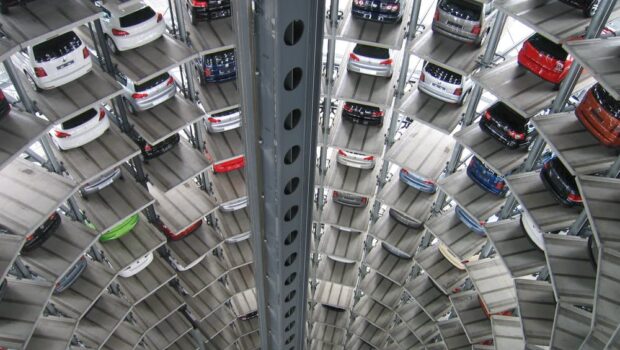Product Configurator in Automobile Industry
With new technology and development, the automobile sector is constantly evolving to keep up with the latest trends and world. For instance, it’s now considered old-fashioned and time-consuming for customers to buy a car or other vehicle in a traditional manner where they go to the dealer, personally do the selection and customization, and wait for the final offshoots to arrive for a test drive. Now, customers especially want products that can adapt to their requirements. This is where the configurator software comes into play.
People who want to buy a new vehicle have likely visited different car manufacturer websites. However, it is hard to decide on a model just by images and descriptions. Therefore, many car manufacturers who strive to present their models and their many options in an effective manner to customers use configurators like the Kia product configurator to present their products and boost sales.
Nearly every major auto producer uses configuration software that you can find on their site. Adobe’s survey shows that customization software like configurators can boost conversions by over 20%. Besides this, there are other benefits of having a configurator tool as well. But before moving on that let’s take a quick overview of the product configurator.
Product Configurator And Automobile Industry
An automobile product configurator is an advanced and more effective digital solution that lets users modify different elements and components of a vehicle. Generally, the user is offered a UI and numerous menus, with an automobile visualization carrying up most of the area. Besides this, details like cost and performance statistics can also be obtained and managed easily.
This kind of software tool is helpful to all automobile-related businesses. For instance, these software tools can be used to show the refinements and modifications in advance. This way, clients can envision how the modifications will look. The MG Motors car configurator helps the user with all the decisions from choosing a car color to which gear they want for their new car. The configurator always considers the user preferences and allows them to make the perfect choice for themself.
Types of Car Configurators
Car configurators in the automobile industry come in diverse forms based on a few factors:
2D and 3D Renders
These types of configurator software depend mostly on 2D renders. They are most affordable and quick to make. This software allows users to examine a series of photorealistic images and select them without going to a physical store to actually experience the product.
Users can also look at different vehicle images captured from renders with different configurations. These images are captured from various angles and merged afterward to give a 3D shape to the product.
Real-time Rendering
The real-time rendering provides an immersive experience for the customer. Since there is usually a lot of 3D content, designers and artists create the models and texture them with specialized 3D designing tools but make sure the software is optimized for a fast-paced rendering of various product models and their options.
Offline Rendering
You might think of this tool as software that does not require the Internet. However, that is not the case here. The server renders images without involving your computer/device providing a higher standard of photorealism.
What are the Benefits of a Product Configurator in the Automobile Industry?
Increased Conversion Rate
Besides various design and performance customizations, the product configurators have practical value in helping users make mindful purchases. There are lots of proven cases that show configuration software increase sales and the conversion rate significantly. For instance, MG / KIA gained notable growth in the conversion rate on their webshop. Stats reveal that customization can boost sales by up to 30%.
Simplified Process
Configurators also let you display products easily with numerous variations to simplify the workflow. Seamless integration into your ERP and CMS system makes this possible. In terms of sustainability, it also allows users to reduce the number of catalogs and brochures. Hence, it simplifies the process and increases production.
Efficiency
Another good thing about the product configurator tool is it lets you create separate orders easily at the tap of a button. This way, the client can deal with the product in advance, optimizing time in the sales process. And common client inquiries, such as what goes together, which components are compatible, etc., are also minimized by this software.
Better Product Presentation
Increasing user engagement, no doubt, is a focus factor for most product service-related companies, so when a model gets major buzz, it is regarded as a huge success. It is fun to use the product configurator, and it encourages the user to be playful and creative. They will get the urge of testing out various unique options while figuring out what fits them best. Getting this level of engagement is not possible just by going through images. The product configurator presents the product in the best way possible.
Improves Operations
By using a product configurator for virtual customization, you can gain useful insights into what clients expect and like. This way, you can save each decision made through the interface and analyze it afterward. Besides, the collection of such data from millions of clients can guide the creation of top-selling models, features, and components as well as the removal of less popular options. When you merged this data with feedback and recommendations, you can plan your marketing and production strategy more effectively.
Ease Up Workload
Another good thing about having a product configurator is; it lessens the workload of the sale department. For instance, a sales team can refer clients to try out various product versions instead of showing images and lengthy descriptions. However, these images and descriptions should be on hand and available on demand, but the number of inquiries and requests directed to the sale department will decrease, making their work smoother.








![Smart Home For Automated Life In 2019 [Infographic]](https://technofaq.org/wp-content/uploads/2019/07/How-to-Automate-Home-in-2019-150x150.jpg)






